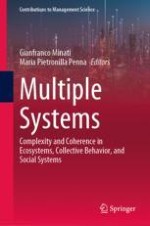This book presents the proceedings of the Eighth National Conference of the Italian Systems Society. The contributions underline the need for Systemics and Systems Science in order to address multiple, changing systems involving several coherent versions.
The conference focused on identifying, discussing, and understanding possible interrelationships between fundamental theoretical advances in different disciplines. Given their scope, these proceedings represent a valuable asset for all researchers whose work involves multiple systems.
